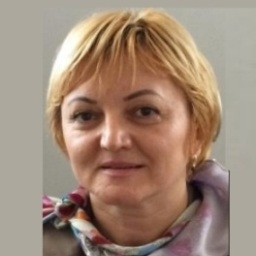Chemical Characterization and Toxicological Activity of Natural and Chemical Active Compounds
A special issue of Molecules (ISSN 1420-3049). This special issue belongs to the section "Natural Products Chemistry".
Deadline for manuscript submissions: closed (15 January 2021) | Viewed by 20295
Special Issue Editor
2. Research Center for Pharmaco-Toxicological Evaluations, Faculty of Pharmacy, Victor Babes University of Medicine and Pharmacy, 2 Eftimie Murgu Street, 300041 Timisoara, Romania
Interests: natural compounds; toxicity; experimental evaluations; efficacy; toxicology; pharmacy; drug; cancer cells
Special Issues, Collections and Topics in MDPI journals
Special Issue Information
Dear Colleagues,
Natural active compounds are relevant in therapeutics and they determine important development in last decade. Their therapeutic properties recognised for many years. The evolution of herbal treatment applications started with total extracts and developed to modern techniques that will produce isolated active compounds. Because of the relevant toxicity of synthetic and chemical synthesis examples, new classes of natural sources were studied to be introduced into practice. Some compounds obtained from plants offer relevant biological properties, such as anticancer, anti-inflammatory, antiviral (including HIV/AIDS) and antimicrobial, for diabetes, etc. These aspects indicate them as future therapeutic targets. The new trends in natural compounds application includes safety, pharmacokinetics and efficacy as relevant parameters. New formulations with natural active compounds are nowadays targeted practical solutions. Another important correlation for natural compounds usage is their structure to derive new other innovative drugs. Examples like pentacyclic triterpenes, flavonols, isoflavones, etc. represent important possible actual and future active products. Their preparation and evaluation are very important because of different therapeutic results influenced by solvents, extraction procedures, specific solubility, and other physico-chemical differences. This Special Issue will include the original work of researchers related to the presented aim as well as new data that will offer possibilities for the development and implementation of some natural compounds or formulations for therapy. Review articles will discuss the specific problems about natural compounds and their activity or specificity that could be relevant for practice and related to the presented aim. Aspects such as the structure–activity relationship activity are accepted, as are new examples of natural sources of active compounds. Authors that consider their submission to be in need of review are kindly asked to contact the guest editor with some information about their paper.
Prof. Dr. Cristina Adriana Dehelean
Guest Editor
Manuscript Submission Information
Manuscripts should be submitted online at www.mdpi.com by registering and logging in to this website. Once you are registered, click here to go to the submission form. Manuscripts can be submitted until the deadline. All submissions that pass pre-check are peer-reviewed. Accepted papers will be published continuously in the journal (as soon as accepted) and will be listed together on the special issue website. Research articles, review articles as well as short communications are invited. For planned papers, a title and short abstract (about 100 words) can be sent to the Editorial Office for announcement on this website.
Submitted manuscripts should not have been published previously, nor be under consideration for publication elsewhere (except conference proceedings papers). All manuscripts are thoroughly refereed through a single-blind peer-review process. A guide for authors and other relevant information for submission of manuscripts is available on the Instructions for Authors page. Molecules is an international peer-reviewed open access semimonthly journal published by MDPI.
Please visit the Instructions for Authors page before submitting a manuscript. The Article Processing Charge (APC) for publication in this open access journal is 2700 CHF (Swiss Francs). Submitted papers should be well formatted and use good English. Authors may use MDPI's English editing service prior to publication or during author revisions.
Keywords
- Active compounds
- Toxicity
- Herbal sources
- Safety
- Experimental evaluations
- In vitro tests
- Anticancer
- Anti-inflammatory
- Antimicrobial
- Pharmacological activity
- Efficacy/toxicity
- Drug design
- Development
- Drugs
- Extraction
- Selectivity
- Isolation
- Precision therapy






